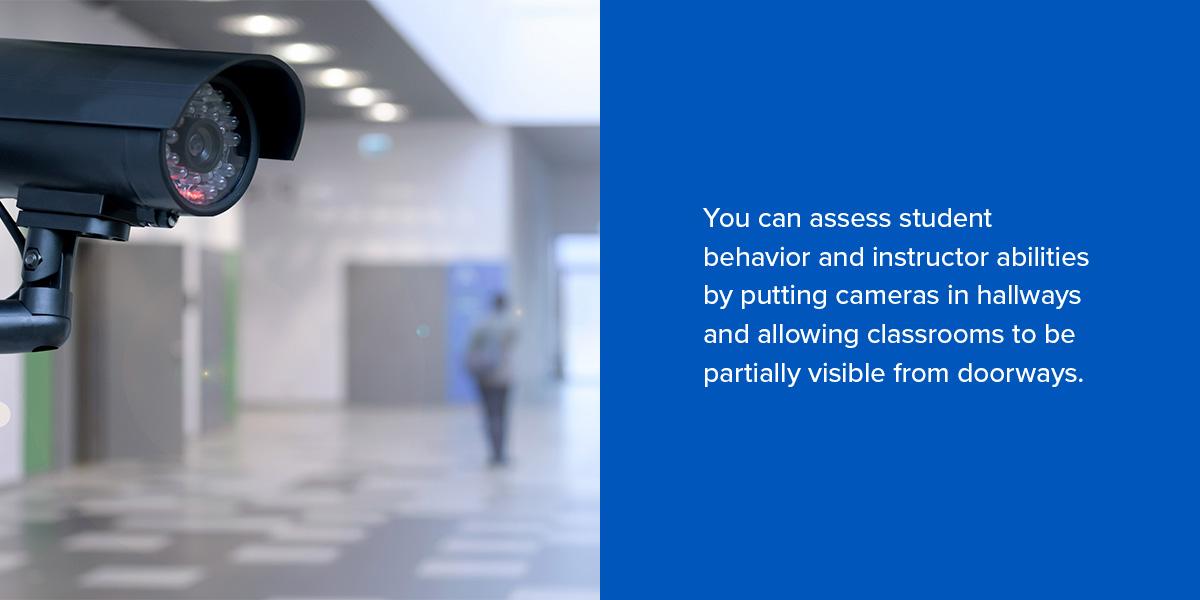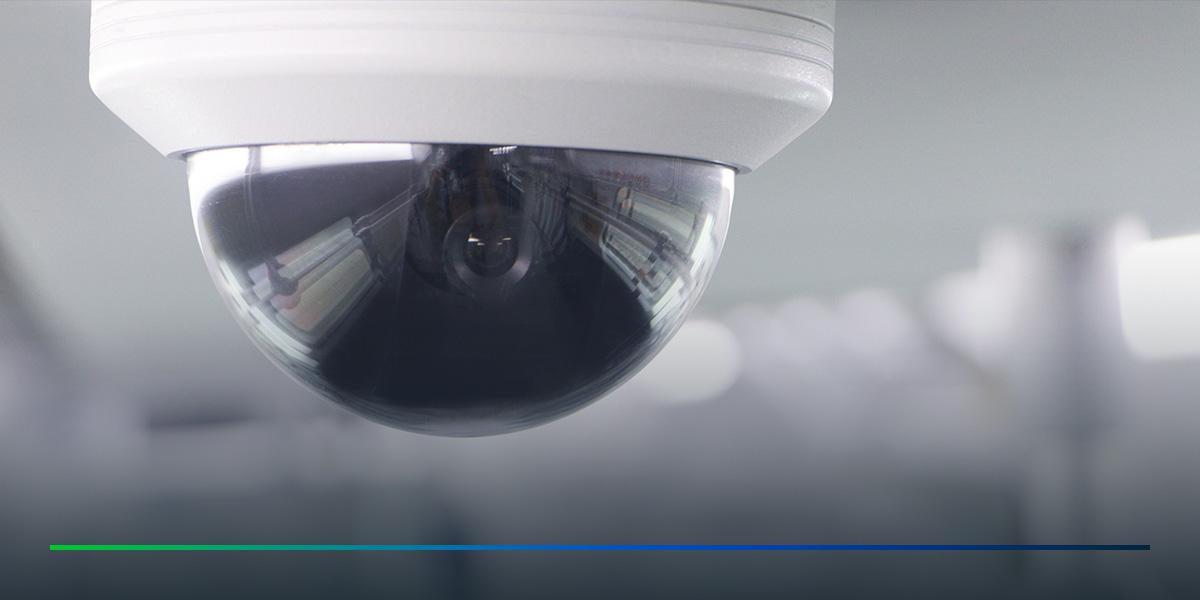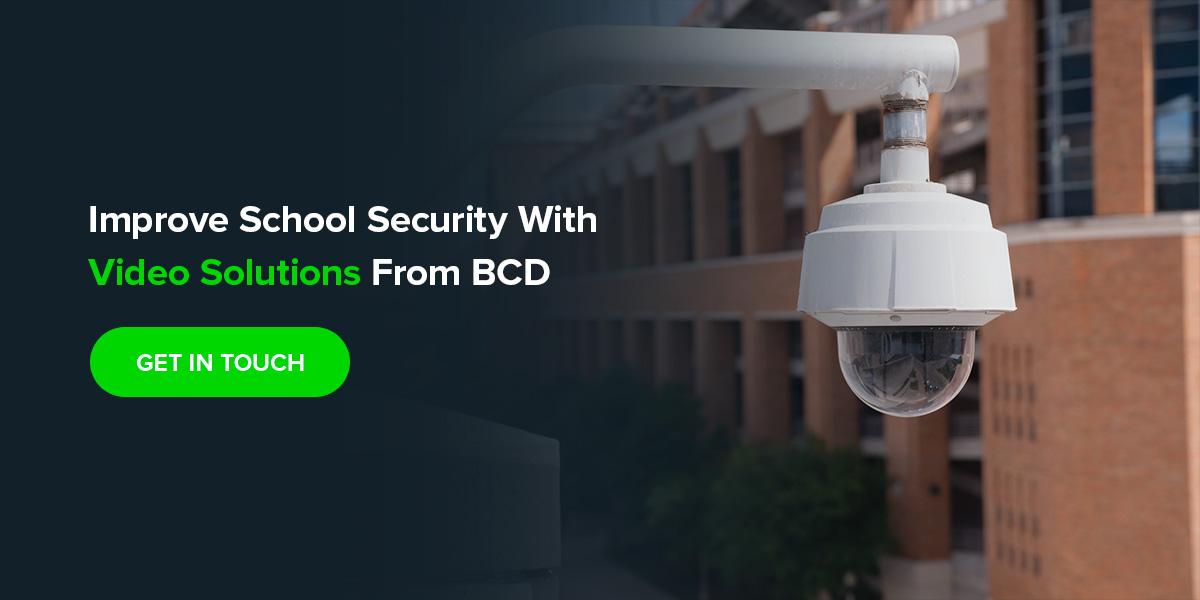Schools need to provide safe learning environments for their students. Using the right equipment can strengthen your security systems for increased capabilities and protection. For many schools, video security solutions help meet their needs.
Why Schools Should Have Security Systems
Video security systems offer several benefits to K-12 campuses. Regardless of your student population, comprehensive security systems with video components can increase protection and reduce stress. When you want to implement or upgrade your security system to include cameras, understanding the various benefits can determine if doing so is suitable for your school:
- Helping all parties feel safe and protected: With many functions and capabilities, you can use your security cameras to provide comprehensive school protection and quickly respond to threats and problems. Having security cameras present can help everyone feel safer on campus, from parents trusting you with their child’s care to students, teachers and faculty who work and study at your facilities.
- Responding quickly to problems: Live video feed and innovative technology can enable your security teams to react faster to situations, from unidentified campus visitors to theft and bullying. Faster response times further increase trust with your school community, solidifying their trust in your protective services and promised safety.
- Increasing school success: Adequate safety protocols and technology can make your school more appealing to potential students. When private schools have to compete with others for applicants, you can ensure incoming families and students know your school is safe. In addition to marketing, having video security systems can reduce stress in your school population, allowing students, faculty and teachers to focus more on learning and instructing.
When you want to serve your school community with the best education and safety procedures, a quality video security system can support your goals.
How Can Your School Use Video Security Systems?
From universities to elementary schools, security cameras have many functions in education. While these systems can increase safety and comfort on school grounds, they can offer several other uses that support initiatives and goals implemented by your faculty. Some functions of school security cameras include:
- Reducing and reacting to bullying: Bullying can be a problem among students of all ages. Your video camera systems can record student interactions, allowing you to identify bullying in progress or collect evidence against bullies to support victims. Overall, video security systems can support more positive, welcoming spaces and interactions, as faculty can use the footage to follow up with students and staff to ensure everyone follows school policies.
- Detering crime on campus: The presence of security cameras and video systems can discourage criminals from acting on your property. From theft to vandalism, you can better protect your buildings, amenities and furniture against crime with comprehensive security systems.
- Providing evidence for claims: If an incident like a fight between students occurs on your campus, security cameras and stored footage can provide essential evidence. You can better understand the events with more accuracy with video evidence, too. In the event of evidence theft or loss, you can submit video footage to law enforcement and insurance companies for stronger proof. Recorded data is easy to share, so you can quickly move through the process.
- Monitoring visitor movement: Parents, guest speakers and other schools might come to your campus for various reasons. Many schools offer open houses where potential students and families can determine if your programs and campus are right for them. Live video footage makes tracking visitors throughout your property easy to ensure they stay where they need to be and identify potential threats or suspicious behavior.
Increased safety is a broad assurance, and video cameras can offer protection in several ways. As versatile tools, you can adapt them to your school’s needs and goals.
Where Can Your School Place Security Cameras?

Video camera school safety solutions offer multiple essential functions, and you can further enhance their performance by placing them in ideal locations. When you want comprehensive protection that deters crime, tracks visitor movement and supports student safety, consider installing your security cameras in the following areas:
- Hallways and intersections
- Entryways
- Stairways
- Cafeterias
- Gyms and playgrounds
- Auditoriums and stadiums
- Parking lots
A camera’s angle can also increase its functionality. Many schools choose to forgo cameras in classrooms because they make students feel like they’re being watched and can distract them from learning. However, you can assess student behavior and instructor abilities by putting cameras in hallways and allowing classrooms to be partially visible from doorways.
Understanding FERPA and Student Privacy
The Family Educational Rights and Privacy Act (FERPA) is legislation that protects the educational records of students. Under this law, school administrators and officials can only release academic records and information to students and their parents unless they obtain proper permission to do otherwise. Parents traditionally hold control over the records until the student turns 18.
FERPA applies to school surveillance footage when linked to a specific academic file. When incidents occur, and schools use cameras as evidence, they can add footage to the involved students’ profiles. These videos then become protected under FERPA and require parental or personal permission to share or release.
How Long Must Schools Retain Surveillance Records?
Each state has unique requirements for keeping surveillance footage. For example, Texas legislation states schools must hold footage for at least six months, while West Virginia only requires three months. Understanding your state’s retention requirements is essential when implementing a school video security system.
Tips for Implementing a Successful School Video Security System
Whether upgrading your existing cameras or implementing new ones, knowing the best practices can help optimize your footage and tools. Some tips for using and implementing security cameras at your school include:
- Monitoring footage in real-time: You can better identify threats and problems by assigning one or more security team members to watch your footage live. These individuals can monitor screens to react sooner to suspicious behavior and eliminate threats before they become problems.
- Backing up footage: Working with law enforcement and insurance companies can take a long time. Backing up your footage can ensure you have access to evidence after an incident. Investing in adequate storage solutions will help preserve video quality and prevent historical footage from being overwritten accidentally.
- Establishing alerts: While your security teams are great resources, you can streamline problem identification and response time with alerts. Technology is getting smarter, and integrated AI and machine learning in cameras can pick up on patterns individuals might miss. You can set alerts to notify the proper parties for better responses and quick reactions. For example, motion sensors are great for outdoor spaces.
Improve School Security With Video Solutions From BCD
How can schools improve safety and security? They need the right resources and partners. Whether you have an existing video security system or want to integrate one, BCD can help guide your school in the right direction by pairing you with the right hardware and software.
BCD’s video security services can help you determine what cameras and technology will best serve your school’s interests and community. We’ll install cameras for you, increasing efficiency and functional optimization. Our consultants will connect you with the server and backup solutions that match your system’s quality and load for stronger video databases.
Contact BCD today to speak with a representative and learn more about how our solutions can apply to your school.


